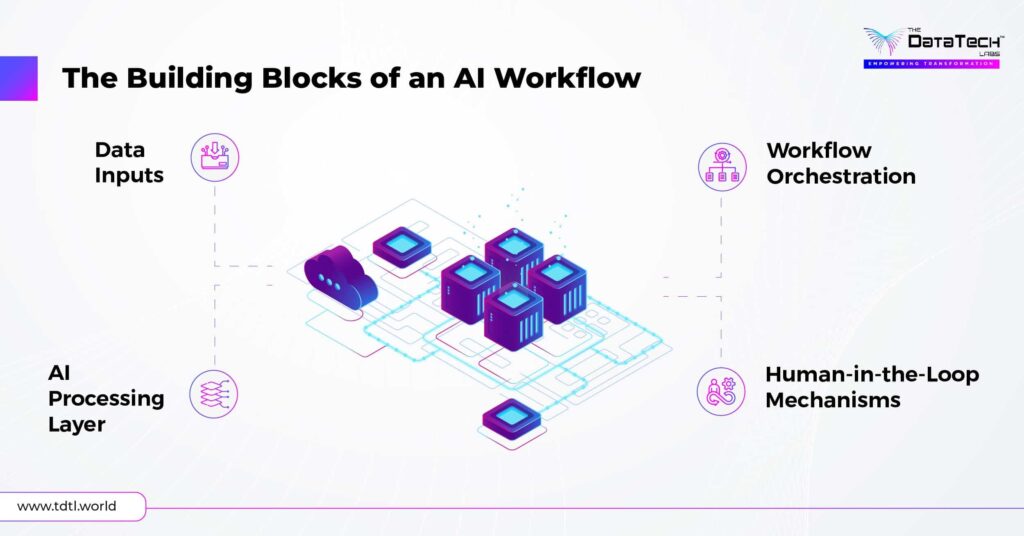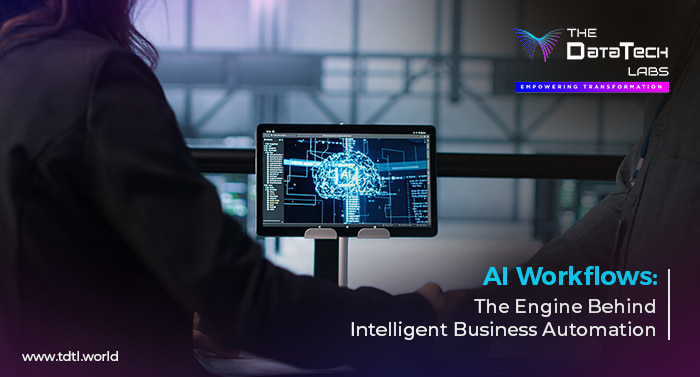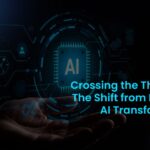In the world of digital transformation, you hear the term ‘workflow’ constantly. When artificial intelligence (AI) comes into play, a workflow goes from being a straightforward workflow to a more powerful, intelligent, adaptive workflow that makes decisions in real-time. That’s the essence of AI workflow.
Unlike traditional workflow automation with strict rules and rigid adherence to the prescribed steps, AI workflows blend automation with cognitive intelligence. Rather than simply performing steps, AI workflows learn, optimize, and evolve over time, setting the foundation for real digital agility.
What is an AI Workflow?
At its core, a workflow is a sequence of steps designed to accomplish a business process. Traditional workflow automation tools execute predefined rules: If event A occurs, trigger action B.
An AI workflow, however, layers artificial intelligence on top of this process. It enables workflows to:
- Interpret data (structured and unstructured)
- Make context-aware decisions
- Adapt to new conditions without manual reprogramming
- Continuously optimize performance based on outcomes
Think of it as a dynamic operating system for business processes. Instead of simply moving data from Point A to Point B, it understands what that data means, what the best action is, and how to improve outcomes the next time around.
AI Workflow vs. Traditional Workflow Automation
It’s important to distinguish between standard workflow automation and AI workflow automation:
| Aspect | Traditional Workflow Automation | AI Workflow Automation |
|---|---|---|
| Logic | Rule-based (“if-then”) | Adaptive & predictive |
| Data | Structured only | Structured + unstructured (text, images, voice) |
| Decision-making | Predefined rules | AI-driven, context-aware |
| Flexibility | Rigid, breaks with exceptions | Learns from exceptions, improves over time |
| Scalability | Handles repetitive tasks at scale | Handles complexity and exceptions at scale |
In short: traditional automation executes, while AI workflow automation thinks, adapts, and improves.
The Building Blocks of an AI Workflow

Creating an AI workflow involves more than just plugging AI into existing processes. Effective AI workflows are built on four core elements:
| Data Inputs | Transactional data, customer interactions, sensor readings, or even documents/images feed the workflow. |
| AI Processing Layer | Machine learning, natural language processing (NLP), and computer vision analyze and interpret inputs. |
| Workflow Orchestration | Automation engines and integrations connect different systems, ensuring AI insights translate into real actions. |
| Human-in-the-Loop Mechanisms | AI workflows are not fully autonomous. Human validation, oversight, and feedback loops are essential to guide and refine outcomes. |
Real-World Applications of AI Workflows
Customer Experience Optimization
- AI Workflow Example: A customer emails support with a vague complaint. The AI workflow reads the message (via NLP), checks past interactions, categorizes urgency, drafts a tailored response, and only escalates if human input is needed.
- Impact: Faster resolution, reduced agent workload, and higher customer satisfaction.
Finance & Compliance
- AI Workflow Example: Incoming loan applications trigger workflows that collect credit history, analyze alternative data (like income patterns), flag potential fraud, and recommend approval or rejection.
- Impact: Accelerated loan processing, better risk control, and fewer false positives.
Healthcare Operations
- AI Workflow Example: Patient intake data flows into an AI workflow that checks insurance eligibility, schedules appointments, and flags patients for additional screening based on health indicators.
- Impact: Reduced admin burden, faster patient care, and better diagnostic accuracy.
Supply Chain & Manufacturing
- AI Workflow Example: IoT sensors detect early signs of equipment failure. It predicts downtime, schedules maintenance, reorders parts, and updates production schedules.
- Impact: Less downtime, higher throughput, and optimized logistics.
Benefits of AI Workflow Automation
- Efficiency Gains – Automates repetitive steps and reduces cycle times.
- Cost Savings – Minimizes manual intervention, errors, and rework.
- Scalability – Handles increasing data volume and complexity without requiring proportional human resources.
- Agility – Adapts workflows to changing business conditions.
- Improved Decision-Making – AI insights enable smarter, faster business actions.
- Enhanced Employee Productivity – Frees teams from routine tasks so they can focus on higher-value work.
Implementation Roadmap for AI Workflows
Building AI workflows requires a strategic approach. Here’s a step-by-step guide for leaders:
Step 1: Identify Use Cases : Pinpoint high-value, high-volume processes where AI can deliver measurable impact. Examples: customer onboarding, fraud detection, or predictive maintenance.
Step 2: Audit Data Readiness : Check the quality, availability, and structure of your data. AI workflows are only as good as the data they consume.
Step 3: Pilot with Contained Scope : Start with a pilot workflow that solves a specific problem. Keep the scope narrow but impactful to build momentum.
Step 4: Integrate Across Systems : Ensure seamless connections between your AI engines, automation tools, and enterprise platforms (CRM, ERP, HRIS, etc.).
Step 5: Enable Human-in-the-Loop Controls : Build in checkpoints for human validation, particularly for sensitive or high-risk decisions.
Step 6: Scale and Optimize : Expand successful pilots into enterprise-wide workflows, continuously monitoring for performance improvements.
Common Challenges in AI Workflow Automation
- Data Quality Issues: Poor or incomplete data leads to flawed decisions.
- Over-Automation: Fully removing humans can cause breakdowns in exceptional cases.
- Integration Complexity: Legacy systems may resist seamless workflow orchestration.
- Change Management: Employees may resist AI-driven workflows if they fear job loss.
The key to overcoming these pitfalls lies in strong governance, clear communication, and continuous improvement practices.
The Future of AI Workflows
The next generation of AI workflows will be:
- Self-Optimizing – Workflows that automatically refine processes based on real-time outcomes.
- Context-Aware – Systems that factor in emotional, behavioral, and environmental context.
- Cross-Enterprise – Workflows spanning multiple organizations, enabling ecosystem-level automation.
- Low-Code/No-Code Enabled – Business leaders and analysts, not just developers, will design and deploy AI workflows with drag-and-drop simplicity.
Conclusion
AI workflows represent the next stage of workflow automation. By combining rule-based efficiency with AI-powered adaptability, they enable organizations to streamline operations, improve decision-making, and scale intelligently.
For business leaders, the real advantage of AI workflow automation lies not just in cutting costs but in reimagining what’s possible. The future belongs to companies that use AI workflows not only to optimize processes but to transform business models entirely.
FAQ's
AI workflows can incorporate encryption, access controls, and anonymization techniques to ensure sensitive information is protected while still enabling intelligent automation.
Yes, AI workflows can process streaming data and make immediate recommendations, enabling businesses to respond instantly to dynamic conditions.
By integrating multiple systems and sharing AI-driven insights, workflows facilitate seamless coordination between teams like marketing, finance, and operations.
Common models include machine learning classifiers, recommendation engines, predictive analytics models, and NLP models for text and voice processing.
ROI can be assessed through metrics like reduced processing time, improved accuracy, cost savings, increased customer satisfaction, and employee productivity gains.




